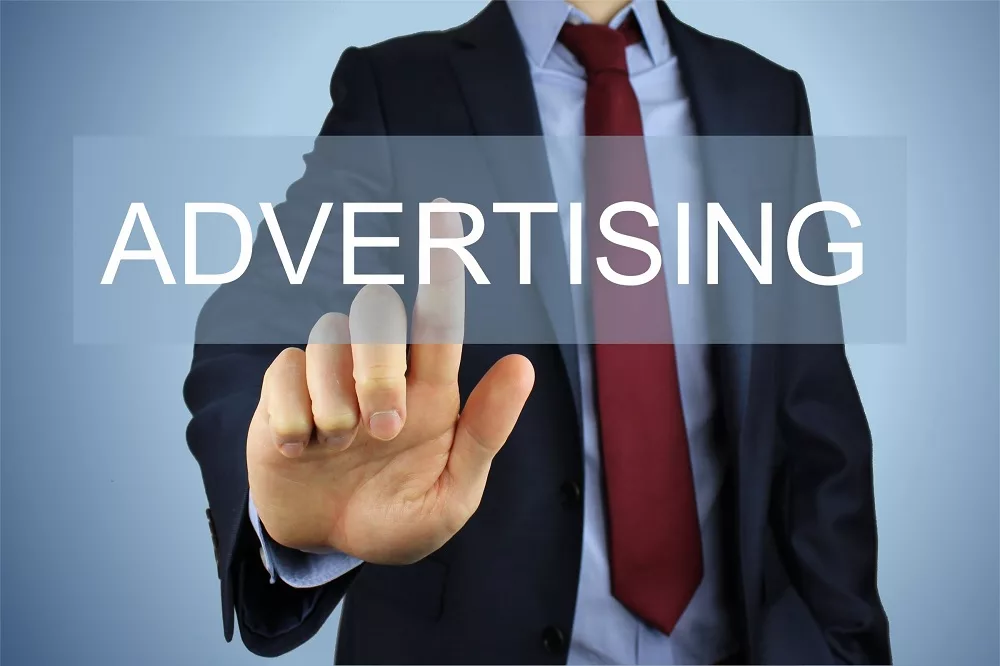How Can Advertising and Publicity Work Together?

“The aim of marketing is to know and understand the customer so well that the product or service fits them perfectly and sells itself.” – Peter Drucker
New ideas come alive in the market everyday. We know the market is aimed at creating opportunities, delivering and communicating demands and strategies, exchanging values and offers for clients and society, as well as achieving their own objective simultaneously.
- Explanation of the roles of advertising and publicity in marketing.
Of Course, there is no sale without advertising and publicity.
Advertising is paid communication through and on various mediums and platforms promoting services, knowledge, brands or products. Key features include product promotion, awareness, brand building, market reach, etc. By communicating and building an image for the brand it serves as a means of communication between the company and its target audience, also helping in creating an identity allowing the business to achieve its potential by reaching the customers through various forms.
- Importance of a coordinated approach between advertising and publicity.
Now the importance of a coordinated approach can prove highly effective if applied strategically to maximise the efforts. Even though publicity and advertising seem different, here’s how we can coordinate them:
Setting Clear Objectives: If one is not clear about the goals, the efforts won’t be fruitful. To determine what exactly the product needs, it could be brand awareness or launching a new product or even driving sales, would address the problem better than making an attempt to solve it generally.
Target Audience: Defining your target audience will give you a headstart as you’ll know what platforms to use and mediums to convey the message. To learn their media consumption habits will help one to reach their audience and engage them.
Develop Consistent Messaging: What do you think of when you hear “Nike”? Well most of them say, “Just do it”. Well that’s because the company created a consistent and a unified message that resonates with their audience; because most of their products are used for fitness purposes and encourages their customers. The consistent message one chooses to go with is adaptable across different platforms and channels to maintain an image.
Determine Budget Allocation: Now, one should effectively be able allocate their resources to where they’re most needed. For example, press releases, online campaigns, etc, that would help one attain the objectives they’ve set. The ability to prioritize the needs is crucial in this aspect.
Integration of Creative Assets: A brand isn’t just a name and tagline. Elements like logos, themes, and design play a major role in sales, which is why the company should provide its consumers a unified experience. Integrating the same would reinforce brand recognition.
Timing and Synchronization: If advertising and publicity don’t follow one after the other or together, the campaign could be a swing and a miss. It’s crucial to time and synchronize efforts one puts to achieve maximum participation from the audience. This could be as simple as creating anticipation.
Monitor and Evaluate Results: One should evaluate the performance, track the reach, engagement and impact it has had, analyse where the approach didn’t prove to be effective, assess and use data driven insights to make adjustments.
Advertising and publicity are distinct strategies, each having its own strengths and weaknesses. By ensuring a smooth coordination of their efforts, one can enhance overall marketing impact and maximize reach and engagement of the audience.
Understanding Advertising and Publicity
- Definition and objectives of advertising
Advertising is creating and delivering persuasive messages through various forms of media platforms. It’s a paid form of market communication that aims at reaching a target audience and influencing their behaviours, perceiving what they favour and shaping strategies using that information. The purpose of advertising is that people engage with the brand and purchases.
- Definition and objectives of publicity
Publicity is the strategic circulation of information, stories or news about the company or its products and services that aims at gathering attention, awareness and creating a positive perception.
- Key differences and similarities between advertising and publicity
While advertising and publicity share similarities in their use of media platforms and goals, targeting, brand promotion, their differences lie in:
- Payment: Advertising is paid communication. We know that however publicity is often earned and needs no direct payment.
- Control: Brands often control what content is being circulated but publicity is less of a paid approach. Rather, the influencers or media platforms decide whether and what to cover or publish in the information. The company has less control there.
- Credibility: It is perceived as unbiased and earned coverage. Advertising, on the other hand, may be seen as a paid promotion and may face criticism regarding its objectivity.
- Message development and cost effectiveness too are the differences and marketers can use these strengths of each approach and create a marketing strategy that ensures effectiveness of their impact.
The Power of Integration
A synergistic relationship between any two concepts lies in their ability to complement each other and make use of it strategically. Here’s a brief exploration of the relationship between advertising and publicity:
Enhanced Reach and Visibility: Advertising and publicity can work hand in hand to increase the reach and visibility of your brand or message. Advertising allows us to target specific audiences through paid promotions, publicity on the other hand contributes to the exposure through earned media, such as press releases, interviews, or endorsements. By combining the two, one can extend a brand’s reach to a larger audience which will lead to increased overall awareness.
Credibility and Trust: We see a lot of testimonies and reviews when buying a product which help us decide whether or not we want to invest in it. All of this is possible because, publicity is trusted and given more credibility than advertising as it’s believed to be an unbiased opinion. This helps build a reputation for the brand and enhances consumers’ trust into the organisation or the company.
Reinforcement and Consistency: A brand should focus on reinforcing the core values of the brand and consistently generate anticipation with the help of publicity which they can later amplify with advertising. Aligning the themes and designs over both the channels would create a stronger presence in the market for the brand. All those jingles stuck in your head, those taglines you can’t help but keep saying, etc are all examples of reinforcement.
While both ads and publicity have the same goal, that is to promote the product or its services and the brand, they approach it from different perspectives. However, combined, they can amplify the overall performance and uplift it’s presence.
- Benefits of integrating advertising and publicity efforts
Integrating advertising and publicity efforts can provide several benefits that enhance the overall effectiveness of your marketing strategy. Some key advantages are that there is increased reach and exposure, more and more people get to know about it, which helps in connecting with more customers.
Reinforcement: Integrating advertising and publicity enables one to reinforce the brand message across multiple channels. If positive publicity is included into campaigns, we can reinforce our brand’s credibility and influence the customers perception and decision making.
Cost-Effectiveness: If the brand already has a reputation then it doesn’t require much advertisement. For example, when asked the owner of Lamborghini, why they did not make use of commercials for, the owner simply said that their audience isn’t sitting around, watching television. This says a lot about the way one decides to promote their services, brand or product and the impact it leaves on the audience.
Enhanced Engagement and Conversion: A movie lately was garnering attention because the director said that they didn’t want to promote the movie using trailers. Now if you think about it, that also is a form of publicity as now it created a buzz because the makers decided to do something unconventional, something we’re not used to seeing everyday. This enhanced engagement and anticipation as it got the people curious and got them invested.
Synergistic Messaging: Creating an unified story for the brand with the help of consistent messaging reinforces brand identity, and increases the chances of audience understanding and building connection.
Comprehensive Campaign Evaluation: Data-driven evaluation helps you measure the overall effectiveness of your integrated marketing strategy and make informed decisions for future campaigns. This ensures that a mistake made once isn’t likely to be repeated.
By integrating advertising and publicity, we can use the strengths of each strategy to maximize a brand’s reach, engagement, and conversion. The core goal of coordinating these efforts is only to help us create an impactful marketing campaign that will enhance the overall effectiveness of promotional activities.
- Amplifying brand messages and reach through combined strategies
All of the efforts go in vain if the strategies aren’t being amplified to convey messages. So how do we do that?
- Social Media: In these times where everything is being digitized and modernized, social media is becoming one of the biggest platforms to advertise and endorse products. We have small businesses that have flourished into becoming well-known brands, for example, Warby Parker; that went from being a company formed by four friends in 2010, with a purpose to provide high quality eyewear, to one of the leading eyewear brand in a competitive market.
- Data driven Optimization: We have to constantly gather and analyze the data of how the advertising and publicity perform. It is crucial to identify the high functioning channels, design tactics to counter the shortcomings, allocate the resources effectively, address the audience in a way that will amplify the reach and lead to more participation.
- Collaboration and Partnerships: We all see influential personalities being ambassadors, endorsing products, collaborating with people in the same field as them. However it is also important that the team chooses the best candidate for collaboration. For example, Bretman Rock would be better suited for a role that concerns the LGBTQ+ community than JK Rowling. This feature helps in upliftment of the brand as the followers of a certain social media influencer now interact with the brand too, thus, meeting the target audience.
- Event Integration and Campaigns: Now there have been times where we were introduced to a concept or a product because that one celebrity we follow on social media was in attendance of the product launch event. When the brands time their content around events that have buzz and media’s attention with the influential people in attendance, it is more likely to make headlines than a sponsored ad we keep skipping.
- Building credibility and trust through coordinated messaging
We don’t go around using any products, especially if they’re related to hygiene. Why do we do that? I mean we don’t trust it directly even if it belongs to a brand, do we? So how does one earn their audience’s trust?
- Transparent Communication: One should be honest to their audience. There was an instance where in 2015, Volkswagen admitted to intentionally installing software in their diesel vehicles that manipulated emissions tests to meet regulatory standards. The company had marketed their diesel cars as “clean” and “environmentally friendly,” but the scandal revealed that the vehicles were emitting harmful pollutants at levels exceeding legal limits. This incident severely damaged Volkswagen’s reputation and resulted in significant financial penalties and legal consequences.
No one wants to take a hit to their reputation that big so companies should refrain from circulating false information and claims to attract attention.
- Consistency: By now it’s clear that consistency is the key. Messages across channels should be circulated from time to time on all platforms and mediums. One should set the tone and language that would set their identity.
- Audience Centric Approach: Strategies, agendas, policies, schemes, etc, should be directed to the audience. One should address and cater their needs, concerns and interests and actively work in their interest and wellbeing. At no point should they feel like it’s a one-way communication. We can take care of that by generating surveys, asking for feedback, inculcating the changes they asked for, answering their queries, etc.
- Authenticity: Notice how we enjoy songs that describe our situation? Well that’s also how it works with the consumers. If we humanize a message, tell stories that they can relate to, share similar experiences, it is more likely to build a trustworthy relationship.
Complementary Strategies
- How advertising and publicity can support each other
As it was stated above, advertising and publicity support each other with the help of providing exposure, cost effectiveness, enhanced engagement, credibility, synergised messages, campaigning, etc.
- Leveraging advertising campaigns to generate publicity.
Well there are a few ways to leverage advertising but we’ll discuss the important ones
- Researching market strategies and keeping it target based: If you’re a clothing brand based on the trends that Generation Z follow, your business is more likely to flourish if used Instagram as a tool than Facebook. Approaches should be target based.
Not just that, you should also look out for what your competitors are going for, after all, surviving in a market where companies rise and fall every day is not easy.
- Keeping the engagement high: We know just being on a website won’t run the business automatically. To engage the audience, we need to show that we care about them. We’ve seen the giveaways on social media right? That’s not only them advertising their products but also making sure a large number of people are participating in it. Catering the products to their needs, making special editions, something that will keep the audience hooked.
- Timing and Placing ads correctly: At times, we need to generate demand if there isn’t any. You’re more likely to get an ice cream if you saw the lady in the ad having one. A back to school and in malls or medical insurances outside hospitals could provide for a good example of the same.
- Utilising publicity to enhance advertising effectiveness
Here are a few ways to encourage positive press for business recommended by the Young Entrepreneur Council.
- Encourage Reviews: Don’t we all go and check reviews of something we’re about to buy? It is evident that we feel heard when someone asks us for our opinion on something. Now, if a company sends out questionnaires that ask for feedback, customers feel that they have a role to play, which they do. Testimonials feel like we’re dealing with real people on the other side of the screen.
- Host a free event: Now there’s a brand new product in the market. Where are we going to find testimonials and reviews for that? Well, the company does need customers to trust them. But how do they do it if there’s no one to back their claims? Well this is where hosting the free event comes in handy. If your friend rings you up on a Friday night asking to accompany you to this event, you’re likely to say no but if there’s a mention of the event being free, you might as well go along, just to see how it turns out and you weren’t busy anyways. I mean what do you have to lose, right?
- Work with influencers: Influencers are often looked up as role models. Noticed all those comments under a post of an influencer asking where they got their clothes from? Or the athleisure they use? Or a company sending out complimentary gifts which they later post on their stories?
This all is a part of publicity and it helps them enhance their sales.
One instance where sales skyrocketed after a celebrity mentioned a product is the case of “Air Jordan” sneakers endorsed by Michael Jordan. In the 1980s, Nike introduced a line of basketball shoes named after the iconic basketball player. However, it was not until Michael Jordan’s widespread fame and endorsement of the brand that the sales of Air Jordans took off. There is still a frenzy with every new release of the sneakers in these series.
Coordinated Messaging
Just showing up consistently does help but that is not all. One should align the target audience with their communication objectives, which as we know are, building awareness, enhancing the engagement, building relationships, influencing behavior etc., as well as create synergy through shared themes, visuals and narratives. A brand should have a unified logo and designs and these elements prove a major role in recognition in the market. Aesthetics, themes, taglines, are all a part of identity and shouldn’t be compromised with. The company should coordinate their messages to avoid confusion among the consumers.
Collaborative Campaigns
- Examples of successful advertising and publicity collaborations.
As we discussed Air Jordans above, we most certainly need to discuss that it was one of the successful collaborations.
Nike and Michael Jordan: Nike’s collaboration with basketball legend Michael Jordan is one of the most iconic and successful partnerships in sports marketing. Together, they created the “Air Jordan” line of sneakers, featuring Jordan’s name and logo. The partnership leveraged Jordan’s popularity and Nike’s marketing prowess, resulting in a highly successful and enduring brand that revolutionized the sneaker industry.
- Joint initiatives, events, or partnerships for maximum impact
We see a lot of collaborations or organisations, sponsors coming together for an event or a cause. It could be music festivals like Away From Home Music Festival hosted by Louis Tomlinson or festivals like Coachella where various brands and sponsors come forth to broaden the experience.
Sports sponsorships like Toyota, Coca Cola with FIFA, etc, are all a part of joint initiatives to gain massive viewership, exposure and engagement.
These events or initiatives help in channeling the resources, getting exposure by reaching to a larger audience with the help of these collaborations which help them get improved brand perception and recognition.
- Case studies highlighting the benefits of a cohesive approach
Dove’s Real Beauty Campaign: This campaign was aimed at challenging the traditional beauty standards, promoting self-esteem and positive body image. It used all the media channels, used diverse representation by featuring women of all ethnicities, ages and body types. They indulged into a social media campaign “Real Beauty Sketches”, where women came forward and shared their stories. This created a sense of community for women. They later partnered with Non-profit Organizations in USA, such as Girl Scouts of the USA and World Association of Girl Guides and Girl Scouts to develop self-respect programs and workshops for young girls. Their commitment to the mission extended the campaign’s impact beyond advertising.
Measuring Success
- Evaluating the combined impact of advertising and publicity efforts.
It’s evident that to make a significant impact in the market, advertising and publicity must coexist. If a strategy is well planned and utilizes the most of both the aspects then we can note increased brand awareness as it would reach a wider audience, cost effectiveness as the brand would speak for itself if it has earned the credibility, recognition in the market as there would be a constant use of taglines, jingles, consistent messaging, also comprehensive campaigns plays a major role as it controls the messaging. This gives us a bigger exposure and engagement through different mediums.
- Key performance indicators and metrics for measurement.
To know if or not campaigns and strategies are successful, one must start measuring the reach, comparing the results with the previous analysis. This can be done with the help of tracking profile visits, social media followers, etc.
Another aspect to measure is engagement.
Metrics such as click through rates (CTR) on social media, often known as likes, shares, comments. Time spent on social media, inquiries received, interactions recorded, all help us track the engagement.
Return on Investment (ROI): Evaluate the effectiveness of an advertising and publicity effort by comparing the costs borne with the results generated. Measure metrics such as the cost per impression (CPM), cost per click (CPC), cost per acquisition (CPA), or return on ad spend (ROAS) to determine the ROI of your campaigns.
More importantly, surveys and feedback play a major role in determining the success as this is direct reviews of customers with first hand experience. The company must know what questions to ask to gather insight that concerns brand recognition, sales, influence it has on people, efforts and their decision making skills.
- Adjusting strategies based on insights and analysis
Gathering data won’t be any good if it isn’t being applied to adjust strategies that aim to challenge itself and the competitors.
It is crucial to take constructive feedback about its shortcomings and apply and adjust the strategies based on new market trends or discard old methods. Defining KPIs (Key Performance Indicators) as using them in order to align with your objectives and seek new insights regularly, adapting to the current dynamics and meeting customer’s needs.
Even though it is important to be flexible with decision making, keeping the insights and analysis in mind, one should decide strategies thoughtfully. We can visit them regularly and re-evaluate as needed to stay in the competition, aligned to the objectives.
Challenges and Considerations
- Potential hurdles in coordinating advertising and publicity efforts
So that was all about cohesiveness. But each pro has a con.
- Communication: As much as community is one of the key features, it could also create problems if there’s miscommunication.
- Budget Constraints: Advertising and Publicity campaigns often require financial resources and it’s not possible that a company will have the means to that. In challenging times like these, the team would have to prioritise and channel its resources to the more important aspects. This could mean that the efforts could fall short and the campaign might not succeed.
- Creative Differences: Having people on board often leads to disagreements, it could be regarding designs, visuals, themes, etc. Finding common ground that meets all the objectives, approved by everyone could be difficult; causing delay in submission and meeting deadlines.
- External factors: There could be unforeseen circumstances and external factors that in most cases the team might not be able to control and manipulate in their favor. Market conditions like competition, changing and adjusting a product due to problems, adapting to trends, etc, can pose challenges among coordination teams.
- Strategies for overcoming challenges and maximising collaboration
Well those were a few problems that might crop up, here’s how to avoid them.
- Effective Communication: Holding regular meetings, sharing opportunities and asking for opinion and feedback, giving out information are all a few measures that will help the members find themselves on the same page. Working with clear objectives and channels of communication ensures smooth flow.
- Sharing set goals: Sharing goals that both the advertising and publicity teams can work towards. Aligning everyone’s interests and ensuring that everyone’s on the same page and striving to achieve will help one avoid differences in the teams.
- Sharing information: Making everyone feel included in the decision making by sharing information and assets will create a project management tool. This includes relevant materials like campaign details, project timelines, visuals, etc. Doing this will help in easy access.
- Developing a shared calendar: This might not sound exactly relevant but having a shared calendar for both the teams for their milestones and other important events will help in identifying potential hurdles that might disrupt the coordination or ensure smooth flow of activities. Hurdles can be overcomed by scheduling and re allocation of resources.
Other ways are to coordinate messages, adjust and optimise, analysing data and measuring results, making the members feel included and heard etc.
Conclusion
- Recap of the symbiotic relationship between advertising and publicity
Throughout the article we explored the synergistic relationship between advertising and publicity. Both of them being distinct concepts, work hand in hand to achieve the same goals that are, generate interest, increase awareness and sales of a product, promotion of brands and services, target the right audience and ensure maximum impact of the promotional campaigns together.
- Importance of a holistic and integrated marketing approach
Importance of a holistic and integrated marketing approach is a strategy to align and coordinate all the efforts across different channels. Just inculcating all the efforts and coordinating them through the channels and cohesive approaches won’t be enough. Also by ensuring consistency in marketing activities, giving the customer great service, consistent branding to make sure that the brand gets the recognition in the market, etc. to ensure maximum impact. All this is possible with the collective approaches and integration of advertising and publicity.








